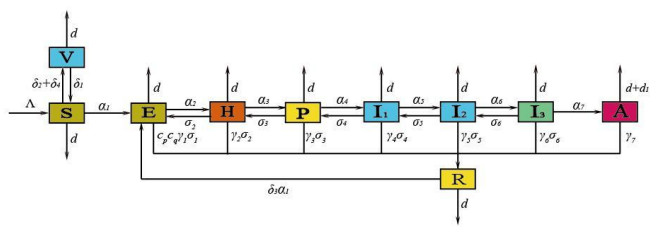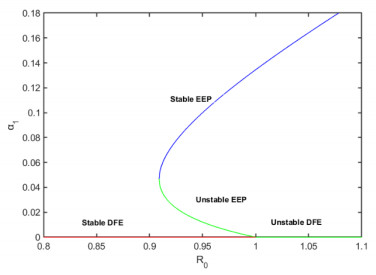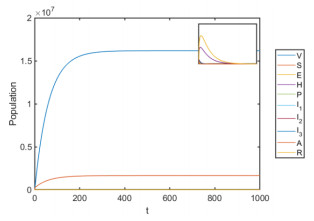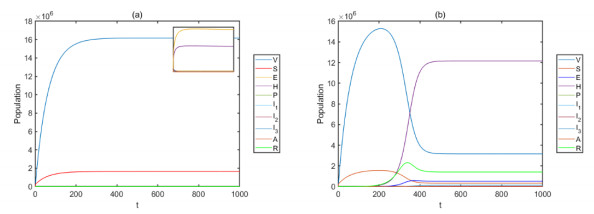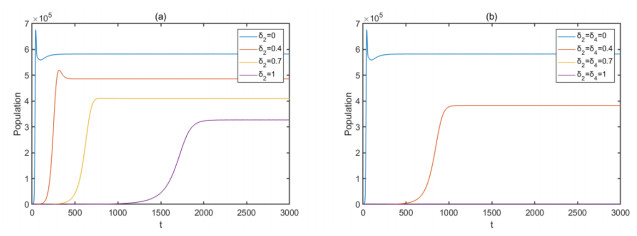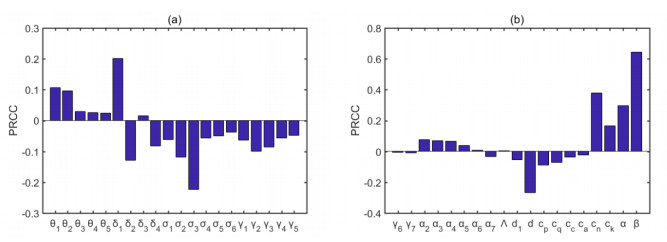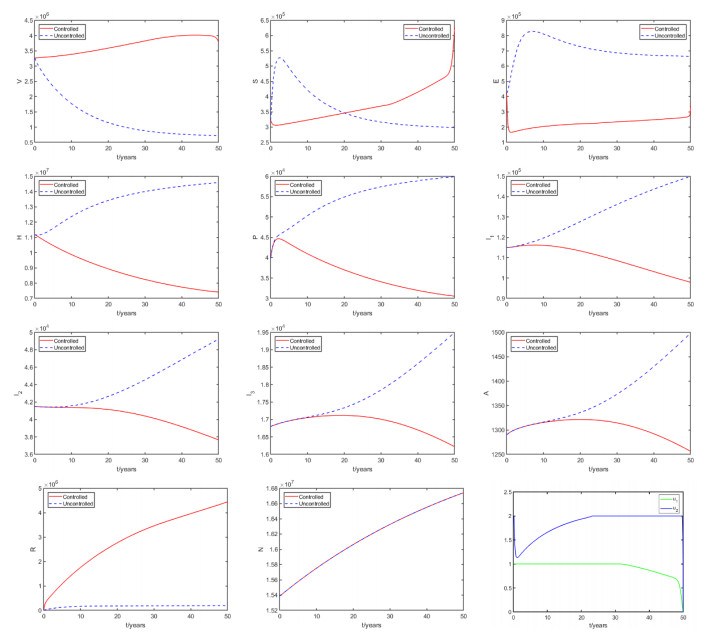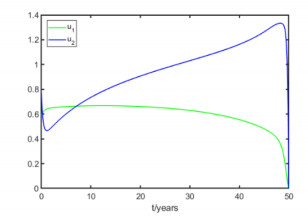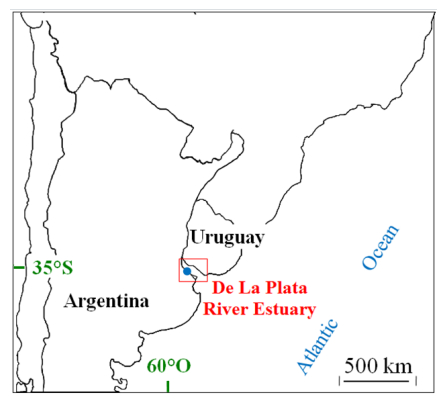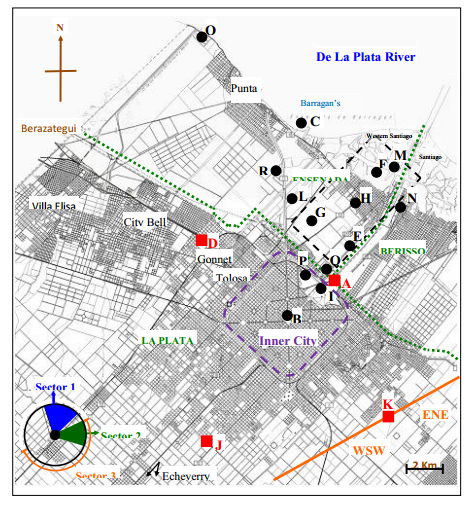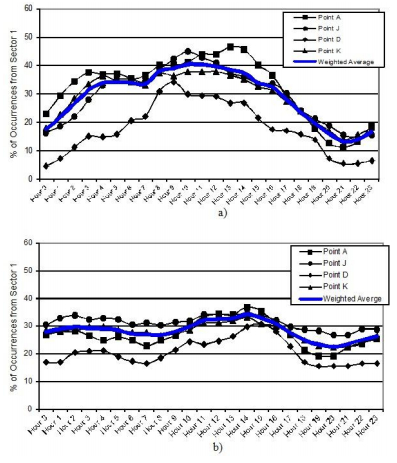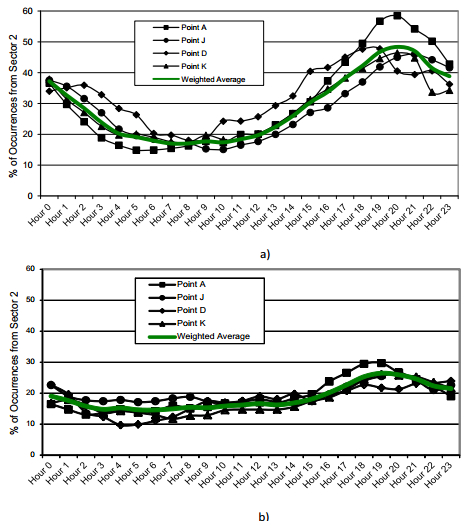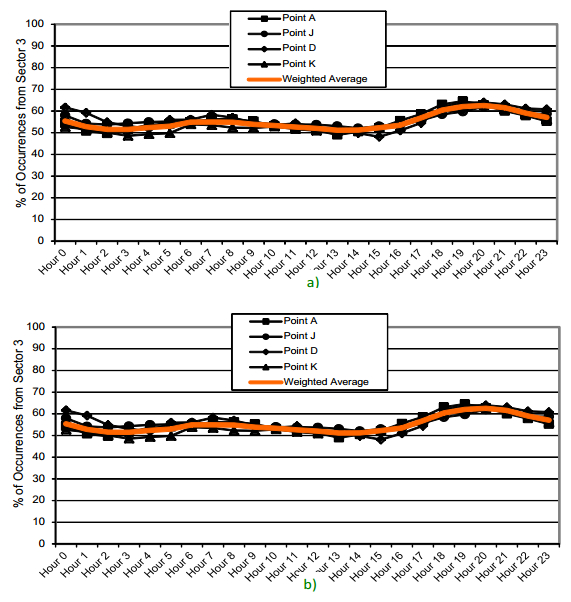|
[1]
|
Kelly F, Fuller G, Walton H, et al. (2012) Monitoring air pollution: Use of early warning systems for public health. Respirology 17: 7–19.1. NU (2009) HOME (Cine documental dirigido por Yann Arthus-Bertrand y producido por Luc Besson y la participación de Naciones Unidas, Nueva York).
|
|
[2]
|
Boubel R, Fox D, Turner D, et al. (1994) The Fundamentals of Air Pollution, Third Edition. San Diego, Academic Press, 1–574.
|
|
[3]
|
Mage D, Ozolins G, Peterson P, et al. (1996) Urban air pollution in megacities of the world. Atmos Environ 30: 681–686.
|
|
[4]
|
Hoffman DJ, Rattner BA, Allen Burton Jr, G et al. (2002) Introduction, In: Hoffman DJ, Rattner BA, Allen Burton Jr, G, Cairus Jr, J, Eds., Handbook of Ecotoxicology, Second Edition, Boca Raton: Lewis Publishers, 1–15.
|
|
[5]
|
Fenger J (2009) Air pollution in the last 50 years-from local to global. Atmos Environ 43:13–22.
|
|
[6]
|
Hughes D (2009) An Environmental History of the World-Humankind's changing role in the community of life, Second Edition. Routledge 1–306.
|
|
[7]
|
Moldoveanu AM (2011) Advanced Topics in Environmental Health and Air Pollution Case Studies. Croatia InTech 1–470.
|
|
[8]
|
Rückerl R, Schneidr A, Breitner S, et al. (2011) Health effects of particulate air pollution: A review of epidemiological evidence. Inhalation Toxicol 23: 555–592.
|
|
[9]
|
WMO (2012) Impacts of Megacities on air pollution and climate. Global Atmosphere Watch, Technical Report No. 205, CH-1211, Geneva, Switzerland.
|
|
[10]
|
Mainka A, Kozielska B (2016) Assessment of the BTEX concentrations and health risk in urban nursery schools in Gliwice, Poland. AIMS Environ Sci 3: 199–219.
|
|
[11]
|
Lebel J (2005) Salud. Un enfoque ecosistémico, Centro Internacional de Investigaciones para el Desarrollo. Ottawa, Eds., Alfaomega, 1–49.
|
|
[12]
|
Andrade MI, Scarpati OE (2007) Recent changes in flood risk in the Gran La Plata, Buenos Aires province, Argentina: Causes and management strategy. Geojournal 70: 245–250.
|
|
[13]
|
Soria J, Fernández M, Más allá del cambio climático: Las dimensiones psicosociales del cambio ambiental global, 2006. Primera edición. Instituto Nacional de Ecología (INE-Semarnat), Universidad Nacional Autónoma de México (UNAM), Facultad de Psicología. Available from: http//:www.ine.gob.mx.
|
|
[14]
|
Cafaro P (2001) Thoreau, Leopold, and Carson: Toward an environmental virtue ethics. Environ Ethics 23: 3–17.
|
|
[15]
|
PNUMA (2001) Justicia Ambiental: Construcción y defensa de los nuevos derechos ambientales culturales y colectivos en América Latina. Coord. E. Leff, Programa de las Naciones Unidas para el Medio Ambiente (PNUMA) y Universidad Nacional Autónoma de México, Centro de Investigaciones Interdisciplinarias en Ciencias y Humanidades, México D.F., 1–275.
|
|
[16]
|
Minteer BA (2009) Nature in Common? Environmental Ethics and the Contested Foundations of Environmental Policy. Philadelphia: Temple University Press, 1–301.
|
|
[17]
|
Gardiner S (2011) A Perfect Moral Storm: The Ethical Tragedy of Climate Change. Univ Oxford 1–408.
|
|
[18]
|
Prieto Méndez JM (2013) Derechos de la Naturaleza, Fundamento, contenido y exigibilidad jurisdiccional. Centro de Estudios y Difusión del Derecho Constitucional-Corte Constitucional del Ecuador, Quito.
|
|
[19]
|
Tosun J (2013) Environmental Policy Change in Emerging Market Democracies, Central and Eastern Europe and Latin America Compared. Toronto: University of Toronto Press, 1–253.
|
|
[20]
|
Muller C, Chapman L, Grimmond C, et al. (2013) Sensors and the city: A review of urban meteorological networks. Int J Climatol 33: 1585–1600.
|
|
[21]
|
Ramsey NR, Klein PM, Iii BM (2014) The impact of meteorological parameters on urban air quality. Atmos Environ 86: 58–67.
|
|
[22]
|
Cochrane A, (2008) Cities: Urban Worlds, In: Daniels P., Bradshaw M., Shaw D., Sidaway J., Eds., An Introduction To Human Geography-Issues For The 21st Century, Third Edition, London: Pearson Education Limited, Prentice-Hall, 205–217.
|
|
[23]
|
Koonings K, Kruijt D, (2009) The rise of megacities and the urbanization of informality, exclusion and violence, In: Koonings, Kruijt, Eds., Megacities: The politics of urban exclusion and violence in the global South, London: Zed Books, 8–16.
|
|
[24]
|
Fernández MA (1996) Ciudades en riesgo, degradaciòn ambiental, riesgos urbanos y desastres. Red de Estudios Sociales en Prevención de Desastres en América Latina, Ed. La Red, 1–30. Available from: http://www.desenredando.org.
|
|
[25]
|
PNUMA. Proyecto Geo Ciudades, PNUMA, 2012. Available from: http://www.pnuma.org.
|
|
[26]
|
BID-AIDIS-OPS (2010) Informe de la evaluación regional del manejo de residuos sólidos urbanos en Amperica Latina y el Caribe 2010. Banco Interamericano de Desarrollo, Asociación Interamericana de Ingeniería Sanitaria y Ambiental, Organización Panamericana de la Salud. Available from: https://publications.iadb.org.
|
|
[27]
|
UNEPWHO (1992) Urban Air Pollution in Megacities of the World. United Nations Environmental Programme-World Health Organization, Blackwell, Oxford.
|
|
[28]
|
Smook RAF, (1998) Chapter 62 European sustainable cities: The chanllenge of citylife: Being exposed to an air polluted urban environment, In: Schneider T, Ed., Air Pollution in the 21st Century: Priority Issues and Policy, Amsterdam, Elsevier, 1043–1056.
|
|
[29]
|
Bicknell J, Dodman D, Satterthwaite D (2009) Adapting cities to climate change-understanding and Addressing the Development challenges. London, Ed. Earthscan, 1–397.
|
|
[30]
|
Romero-Lankao P, Qin H, Borbor-Cordova M (2013) Exploration of health risks related to air pollution and temperature in three Latin American cities. Soc Sci Med 83: 110–118.
|
|
[31]
|
Jabareen J (2015) The risk city: Cities countering climate change: Emerging planning theories and practices around the world. Springer Neth 1–204.
|
|
[32]
|
Fenger J (1999) Urban air quality. Atmos Environ 33: 4877–4900.
|
|
[33]
|
OECD (2010) Cities and Climate Change. OECD Publishing, Available from: http://dx.doi.org/10.1787/9789264091375-en.
|
|
[34]
|
WB, (2011) Introduction: Cities and the Urgent Challenges of Climate Change, In: Hoornweg D., Freire M., Lee M., Bhada-Tata P., Yuen B., Eds., Cities and climate change-Responding to an urgent agenda, Washington: The World Bank, 1–14.
|
|
[35]
|
UNEP (2014) La Asamblea histórica de la ONU para el Medio Ambiente reclama una acción más fuerte para mejorar la calidad del aire, responsable de 7 millones de muertes al año, junto a otras 16 resoluciones, Nairobi, June 2014. Available from: http://www.unep.org/Documents.Multilingual/Default.Print.asp? DocumentID =2791&ArticleID=10931&l=es.
|
|
[36]
|
Riojas Rodríguez H, Soares da Silva A, Texcalac-Sangrador JL, et al. (2016) Air pollution management and control in Latin America and the Caribbean: Implications for climate change. Pan Am J Public Health 40: 150–159.
|
|
[37]
|
Erikson LE, Jennings M (2017) Energy, Transportation, Air Quality, Climate Change, Health Nexus: Sustainable Energy is Good for Our Health. AIMS Public Health 4: 47–61.
|
|
[38]
|
Khare A, Beckman T (2013) Mitigating Climate Change-the Emerging Face of Modern Cities, Heidelberg, Springer, 1–281.
|
|
[39]
|
Thornbush MJ (2015) Vehicular Air Pollution and Urban Sustainability An Assessment from Central Oxford, UK. Heidelberg, Springer Cham, 1–71.
|
|
[40]
|
De Flander K, (2013) Resource-Centered Cities and the Opportunity of Shrinkage, In: Khare A., Beckman T., Eds., Mitigating Climate Change-the Emerging Face of Modern Cities, Heidelberg, Springer, 45–58.
|
|
[41]
|
Wais de Badgen IR (1998) Ecología de la Contaminación Ambiental, 1ra Edición, Buenos Aires, Ediciones Universo, 1–208.
|
|
[42]
|
Korc ME, Sáenz R (1999) Monitoreo de la calidad del aire en América Latina. Korc Marcelo E 1–22.
|
|
[43]
|
Petcheneshsky T, Gravarotto MC, Benitez R, et al. (2002) La Evaluación de la Calidad del Aire en la República Argentina. Departamento de Salud Ambiental del Ministerio de Salud y Acción Social de La Nación, Buenos Aires, AIDIS, 1–13.
|
|
[44]
|
PNUMA (2004) Geo Argentina. Perspectivas del Medio Ambiente de la Argentina. Programa de las Naciones Unidas para el Medio Ambiente (PNUMA) y Secretaría de Ambiente y Desarrollo Sustentable de la República Argentina (SAyDS), 1–303.
|
|
[45]
|
Mazzeo NA, Venegas LE, Choren H (2005) Analysis of NO, NO2, O3 and NOx concentrations measured at a green area of Buenos Aires City during wintertime. Atmos Environ 39: 3055–3068.
|
|
[46]
|
Arkouli M, Ulke AG, Endlicher W, et al. (2010) Distribution and temporal behavior of particulate matter over the urban area of Buenos Aires. Atmos Pollut Res 1: 1–8.
|
|
[47]
|
Fujiwara FG, Gomez D, Faggi A (2013) Perfiles químicos y patrones espaciales del polvo de la calle colectado en la megaciudad de Buenos Aires. Libro de Actas de PROIMCA, Proyecto Integrador para la Mitigación de la Contaminación Atmosférica, Universidad Tecnológica Nacional, 385–392. Available from: http://www.utn.edu.ar/secretarias/pp(Memorias).
|
|
[48]
|
Olcese LE, Toselli BM (2002) Some aspects of air pollution in Córdoba, Argentina. Atmos Environ 36: 299–306.
|
|
[49]
|
Diez S, Fonseca JM, Piccioni M, et al. (2013) Dispersión de PM10 generado por el tráfico vehicular en la ciudad universitaria, Córdoba capital. Libro de Actas de PROIMCA, Proyecto Integrador para la Mitigación de la Contaminación Atmosférica, Universidad Tecnológica Nacional, 469–482. Available from: http://www.utn.edu.ar/secretarias /pp(Memorias).
|
|
[50]
|
Achad M (2015) Aerosoles: Efectos sobre la Radiación UV-B y sobre la Calidad de Aire en la Región Central de Argentina. Tesis Doctoral, Universidad Nacional de Córdoba, Córdoba, Argentina.
|
|
[51]
|
Puliafito E, Guevar M, Puliafito C (2003) Characterization of urban air quality using GIS as a management system. Environ Pollut 122: 105–117.
|
|
[52]
|
Allende D, Romero G, Cremades P, et al. (2013) Caracterización horaria y diaria de la concentración del número total de partículas en ambientes urbanos y suburbanos en Mendoza, Libro de Actas de PROIMCA, Proyecto Integrador para la Mitigación de la Contaminación Atmosférica, Universidad Tecnológica Nacional, 393–409. Available from: http://www.utn.edu.ar/secretarias /pp(Memorias).
|
|
[53]
|
Allende D, Flores P, Ruggeri R, et al. (2015) Medición y caracterización de las fuentes de PM10, PM2.5 y PM1 en las áreas urbanas y suburbanas del Gran Mendoza y Gran San Juan, Libro de Actas de PROIMCA, Proyecto Integrador para la Mitigación de la Contaminación Atmosférica, Universidad Tecnológica Nacional, 157–172. Available from: http://www.utn.edu.ar/secretarias /pp(Memorias).
|
|
[54]
|
Caminos JA, Enrique C, Ghirardi R, et al. (2011) Calidad de Aire en la Ciudad de Santa Fe. Facultad Regional Santa Fe, Universidad Tecnológica Nacional, Editorial UTN, 1–42.
|
|
[55]
|
PNUMA (2007) Perspectivas del Medio Ambiente Urbano: Geo San Miguel de Tucumán, Programa de las Naciones Unidas para el Medio Ambiente (PNUMA), Facultad de arquitectura y urbanismo de la Universidad Nacional de Tucumán, Municipalidad de San Miguel de Tucumán, 1–249. Available from: http://www.pnuma.org/.
|
|
[56]
|
Puliafito E, Rey Saravia F, Pereyra M, et al. (2007) Calidad del aire en el polo petroquímico de Bahía Blanca, Libro de Actas PROIMCA (publicado en 2009), Proyecto Integrador para la Mitigación de la Contaminación Atmosférica, Universidad Tecnológica Nacional, 113–121. Available from: http://www.utn.edu.ar/secretarias /pp(Memorias).
|
|
[57]
|
Arranz G, Pereyra M, Cifuentes O (2015) Herramienta de gestión: Monitoreo perimetral en tiempo real de emisiones industriales de VCM (Caso Polo Petroquímico de Bahía Blanca), Libro de Actas de PROIMCA, Proyecto Integrador para la Mitigación de la Contaminación Atmosférica, Universidad Tecnológica Nacional, 173–188. Available from: http://www.utn.edu.ar/secretarias/pp(Memorias).
|
|
[58]
|
Puliafito E (2009) Gestión de la calidad del aire en la Argentina, Libro de Actas de PROIMCA, Proyecto Integrador para la Mitigación de la Contaminación Atmosférica, Universidad Tecnológica Nacional, 67–82. Available from: http://www.utn.edu.ar/secretarias/pp(Memorias).
|
|
[59]
|
Bell M, Davis DL, Gouveia N, et al. (2006) The avoidable health effects of air pollution in three Latin American cities: Santiago, São Paulo, and Mexico City. Environ Res 100: 431–440.
|
|
[60]
|
Garcia-Huidobro T, Marshall FM, Bell JNB (2001) A risk assessment of potential agricultural losses due to ambient SO2 in the central regions of Chile, Atmos Environ 35: 4903–4915.
|
|
[61]
|
Mölders N (2012) Land Use and Land Cover Changes-Impact on Climate and Air Quality. New York Springer, 1–189.
|
|
[62]
|
Miranda JJ (2006) Impacto Económico en la Salud por Contaminación del Aire en Lima Metropolitana, Programa de Investigaciones ACDI, IDRC (International Development Research Centre), Consorcio de Investigación Económica y Social (CIES), Instituto de Estudios Peruanos, 1–38. Available from: http://redpeia.minam.gob.pe.
|
|
[63]
|
Sánchez Triana E, Kulsum A, Yewande A (2007) Prioridades ambientales para la reducción de la pobreza en Colombia. Un análisis ambiental del país para Colombia. Banco Internacional de Reconstrucción y Fomento/Banco Mundial, Washington. Bogotá, Banco Mundial y Mayol Ediciones S.A., 1–501.
|
|
[64]
|
OECD (2014) The Cost of Air Pollution: Health Impacts of Road Transport. OECD Publishing, 1–80. Available from: http://dx.doi.org/10.1787/9789264210448-en.
|
|
[65]
|
Lovett GM, Burns DA, Driscoll CT, et al. (2007) Who needs environmental monitoring? Front Ecol Environ 5: 253–260.
|
|
[66]
|
GPBA-UNLP (1982) La Plata, una obra de arte 1882–1982, GPBA (Gobierno de la Provincia de Buenos Aires)-UNLP (Universidad Nacional de La Plata), 1–437. Disponible en: Biblioteca Pública-Universidad Nacional de La Plata, Plaza Rocha 137. Available from: http://biblio.unlp.edu.ar.
|
|
[67]
|
Cowen MP (2010) Viejos problemas en ciudades nuevas: La Plata: Agua potable y problemas sanitarios en la época fundacional. Res Gesta 2010: 69–96.
|
|
[68]
|
Ravella O, Giacobbe N (2003) Sustentabilidad, movilidad y transporte: El caso del Gran La Plata. Av Energías Renov y Medio Ambiente 7: 19–24.
|
|
[69]
|
LINTA-IIT (2016) Patrimonio cultural y turismo en La Plata, Berisso y Ensenada. Provincia de Buenos Aires, Argentina. Ed. LINTA (Laboratorio de Investigaciones del Territorio y el Ambiente) y IIT (Instituto de Investigaciones en Turismo), 1–110. Available from: http://sedici.unlp.edu.ar/handle/10915/55598.
|
|
[70]
|
Lerange C, Pardo D, Diyelsi M, et al. (1982) La Plata ciudad milagro. Buenos Aires, Ed. Corregidor, 1–683.
|
|
[71]
|
Romero LA (2012) Breve historia contemporánea de la Argentina, 3ra Ed., Buenos Aires, Fondo de Cultura Económica, 1–431.
|
|
[72]
|
Lopez I, Etulain J (1992) Emergentes de los planes urbanos y nuevas estrategias. Estudio del casco del partido de La Plata. En: La Plata, de la ciudad antigua a la ciudad nueva. Sueños y Realidades. LINTA (Laboratorio de Investigaciones del Territorio y el Ambiente)-UNLP (Universidad Nacional de La Plata), La Plata, 67–72. Disponible en Biblioteca Pública-Universidad Nacional de La Plata, Plaza Rocha 137. Available from: http://biblio.unlp.edu.ar.
|
|
[73]
|
Katz RS (2007) Ciudad de La Plata y su historia. Buenos Aires, Edición de Autor, 1–524. Disponible en: Biblioteca Pública- Universidad Nacional de La Plata, Plaza Rocha 137. Available from: http://biblio.unlp.edu.ar.
|
|
[74]
|
Oszlak O (1991) Mereced la ciudad. Los pobres y el derecho al espacio urbano. Buenos Aires, Ed. CEDES- Hvumanitas, 1–315.
|
|
[75]
|
Frediani J (2010) Lógicas y tendencias de la expansión residencial en áreas periurbanas-El partido de La Plata, Buenos Aires, Argentina, entre 1990 y 2010, Tesis de Doctorado, Argentina, Facultad de Humanidades y Ciencias de la Educación-Universidad Nacional de La Plata, 1–458. Available from: http://sedici.unlp.edu.ar/.
|
|
[76]
|
VA (2017) Mapas de Villas de la Argentina. Obtenido en Febrero de 2017 de. Available from: http://relevamiento.techo.org.ar.
|
|
[77]
|
Hurtado M, Cabral M, Gimenez J, et al. (1992) Cavas, Degradación ambiental producto de la actividad extractiva, In: La Plata, de la ciudad antigua a la ciudad nueva. Sueños y Realidades, LINTA (Laboratorio de Investigaciones del Territorio y el Ambiente)-UNLP (Universidad Nacional de La Plata), La Plata, 94–97. Disponible en: Biblioteca Pública- Universidad Nacional de La Plata, Plaza Rocha 137. Available from: http://biblio.unlp.edu.ar.
|
|
[78]
|
MLP-UNLP (2001) Observatorio de Calidad de Vida La Plata. Diagnóstico de Calidad de Vida en el Partido de La Plata, Municipalidad de La Plata (MLP) y Universidad Nacional de La Plata (UNLP), La Plata, 1–316. Disponible en: Biblioteca Pública-Universidad Nacional de La Plata, Plaza Rocha, 137, Available from: http://biblio.unlp.edu.ar.
|
|
[79]
|
Rozadilla G, Solimano F, Correa L, et al. (2015) Análisis de potabilidad de aguas subterráneas en La Plata y alrededores, Libro de Actas de PROIMCA, Proyecto Integrador para la Mitigación de la Contaminación Atmosférica, Universidad Tecnológica Nacional, 519–530. Available from: http://www.utn.edu.ar/secretarias /pp(Memorias).
|
|
[80]
|
FCLP (2011) El futuro de la ciudad, Fundación Ciudad de La Plata, Centro Cultural Dardo Rocha, La Plata. Available from: http://www.fundciudaddelaplata.org.ar.
|
|
[81]
|
La Nación (2011) Advierten que La Plata pierde su esencia, National Dairy Newspaper "La Nación", Noviembre 21. Available from: http://www.lanacion.com.ar.
|
|
[82]
|
Lauría D, Brugallera R, Couselo R, et al. (2010) Caracterización productiva regional, La Plata-Berisso-Ensenada, Fac. de Ciencias Económicas-Universidad Nacional de La Plata, La Plata, 1–52. Available from: http://www.mba.econo.unlp.edu.ara.
|
|
[83]
|
Frediani JC, López MJ (2014) Diseño de una matriz de medidas tendientes a la integración ciudad-movilidad a partir de las componentes ambiental, energética y social. Rev Transp y Territorio 6: 33–52.
|
|
[84]
|
Blanco EE, Porta AA (2013) La contaminación atmosférica y la salud de la población en la micro región La Plata, Berisso y Ensenada. Definición de variables e indicadores de gestión en el marco de políticas públicas. Reporte de la Editorial Universitaria de la Universidad Tecnológica Nacional (UTN-Argentina), 1–11. Available from: http://www.edutecne.utn.edu.ar/coini_2013/trabajos/COA20_TC.pdf.
|
|
[85]
|
CIPPEC (2016) Gobernanza metropolitana en América Latina y el Caribe, Documento de Trabajo Nro. 51. Programa de Ciudades-Area de Instituciones y Gestión Pública, Centro de Implementación de Políticas Públicas para la Equidad y el Crecimiento (CIPPEC) y Banco Interamericano de Desarrollo (BID), Buenos Aires, 1–222. Available from: http://www.cippec.org.
|
|
[86]
|
Barros V, Menéndez A, Nagy G (2005) El Cambio Climático en el Río de La Plata, CIMA Textos del reporte técnico de los proyectos: Impactos del Cambio Global en las áreas costeras del Río de la Plata y Variabilidad hidroclimática del estuario del Río de la Plata: Influencia humana, ENSO y estado trófico. Proyecto "Assessments of Impacts and Adaptations to Climate Change (AIACC)", START-TWAS-UNEP, 1–204.
|
|
[87]
|
Scarpati O, Benitez M (2005) Las inundaciones en la ciudad de La Plata. Su análisis en relación con las precipitaciones durante las últimas décadas del siglo XX, Geograficando, 1: 1–11. Available from: http://geogra_cando.fahce.unlp.edu.ar.
|
|
[88]
|
Dutton K (2013) La Vulnerabilidad de la Tercera edad en Desastres Naturales: Un Estudio de la Inundación en La Plata, Argentina el 2 de abril de 2013, Paper 1583. Independent Study Project (ISP) Collection, 1–57. Available from: http://digitalcollections.sit.edu/isp_collection/1583.
|
|
[89]
|
Guerrero E, Agnolin F (2016) Recent changes in plant and animal distribution in the southern extreme of the Paranaense biogeographical province (northeastern Buenos Aires province, Argentina): Ecological responses to climate change? Rev Mus Argent Cienc Nat 18: 9–30.
|
|
[90]
|
CAI (2012) La Calidad del Aire en América Latina: Una Visión Panorámica. Clean Air Institute, EUA, Washington DC, 1–36. Available from: http://www.cleanairinstitute.org/calidad delaireamericalatina/TransporteyAireLimpio-cai-april2013.pdf.
|
|
[91]
|
WHO (2006) Planning to protect children against hazards, Europe, World Health Organization, 1–25. Available from: http://www.euro.who.int/eehc.
|
|
[92]
|
WHO (2006) Principles for evaluating health risks in children associated with exposure to chemicals. Environmental Health Criteria 237, Geneva, World Health Organization, 1–351.
|
|
[93]
|
Sánchez-González D, Rodríguez-Rodríguez V (2016) Environmental Gerontology in Europe and Latin America, Policies and Perspectives on Environment and Aging. Heidelberg, Springer International Publishing, 1–306.
|
|
[94]
|
INDEC (2017) Informes Técnicos Vol. 1 Nro. 53, Condiciones de Vida Vol.1 Nro. 4, Incidencia de la pobreza y la indigencia en 31 aglomerados urbanos. Segundo Semestre 2016. Instituto Nacional de Estadísticas y Censos, ISSN 2545-6636, Ministerio de Hacienda, Argentina. Available from: http://indec.gob.ar.
|
|
[95]
|
El Día (2017) La Plata es la ciudad bonaerense con más asentamientos y villas: Tiene 129, Local Daily Newspaper "El Día", January 15, La Plata. Available from: http://www.eldia.com.
|
|
[96]
|
UN-HABITAT (2012) State of the World's Cities. Prosperity of Cites. Nairobi: United Nations Human Settlements Programme, 1–149.
|
|
[97]
|
Lipfert FW (2004) Air pollution and poverty: Does the sword cut both ways? J Epidemiol Community Health 58: 2–3.
|
|
[98]
|
Petcheneshsky T, Gravarotto MC, Benitez R, et al. (1998) Gestión de la Calidad de Aire Urbano-Industrial. Situación del Monitoreo de la Calidad del Aire (GEMS-AIRE) en la República Argentina. Departamento de Salud Ambiental del Ministerio de Salud y Acción Social de La Nación, Buenos Aires, AIDIS, 1–12.
|
|
[99]
|
AAPLP (2006) Análisis Ambiental del Partido de La Plata. Aportes al Ordenamiento Territorial, Instituto de Geomorfología y Suelos-UNLP y Centro de Investigaciones de Suelos y Aguas de Uso Agropecuario (CISAUA), Provincia de Buenos Aires, Consejo Federal de Inversiones, Municipalidad de La Plata, 1–124. Available from: http://sedici.unlp.edu.ar/handle/10915/27046.
|
|
[100]
|
Gassmann MI, Mazzeo NA (2000) Air pollution Potential: Regional Study in Argentina. Environ Manage 25: 375–382.
|
|
[101]
|
WHO (1998) La Salud en las Américas, Vol. 1 & 2, Washington. Publicación Científica Nº 569, World Health Organization, 1–972.
|
|
[102]
|
SPA (2007) Exp.2145-7007/06 Secretaría de Política Ambiental de la Provincia de Buenos Aires, La Plata, Argentina (Ref.: Solicitud de información ambiental de La Plata y alrededores según los beneficios de la Ley 25.831/04―Régimen de libre acceso a la información pública ambiental).
|
|
[103]
|
Ratto G (2016) Estudio de parámetros ambientales utilizando técnicas espectroscópicas, datos meteorológicos y métodos estadísticos, Tesis de Doctorado, Centro de Investigaciones Opticas y Universidad Nacional de La Plata, Argentina. Available from: http://sedici.unlp.edu.ar/.
|
|
[104]
|
Cabrera Christiansen F, Sosa E, Dobal M, et al. (2015) Polos: Injusticias ambientales e industrialización petrolera en Argentina. Ediciones del Jinete Insomne 1–136.
|
|
[105]
|
McGregor GR, (1999) Basic Meteorology (Chapter 3), In: Holgate ST, Samet JM, Koren HS, Maynard RL, Eds., Air Pollution and Health, San Diego, Academic Press, 21–49.
|
|
[106]
|
Wieringa J (1996) Does representative wind information exist? J Wind Eng Ind Aerod 65: 1–12.
|
|
[107]
|
Wieringa J (1980) Representativeness of Wind Observations at Airports, Bull Am Meteorol Soc 61: 962–971.
|
|
[108]
|
Holzworth GC (1967) Mixing depths, wind speeds and air pollution potential for selected locations in the United States. J Appl Meteorol 6: 1039–1044.
|
|
[109]
|
Mazzeo NA, Nicolini M, Müler C, et al. (1974) Algunos aspectos climatológicos de la contaminación atmosférica en el área de La Plata (Prov. de Buenos Aires). Meteorológica 3: 99–134.
|
|
[110]
|
Nieto AE, Macchi C, Digiani AR, (1971) Air pollution levels in the city of La Plata, In: Englund HM, W.T. Beery, Eds., Proceedings of the Second International Clean Air Congress, Washington: Academic Press Inc, 1–2.
|
|
[111]
|
Mazzeo NA, Nicolini M, Moledo L, et al. (1972) Condiciones de Estabilidad Atmosférica y Capacidad de Dilución Vertical de Contaminantes en la Ciudad de La Plata. Congreso Interamericano de Ingeniería Sanitaria, Paraguay: Agosto, 1972: 101–114.
|
|
[112]
|
Mazzeo NA, Nicolini M (1974) Eficiencia de las dispersión atmosférica en la zona de La Plata (Provincia de Buenos Aires). Meteorológica 5: 33–43. Available from: http://www.cenamet.org.ar.
|
|
[113]
|
Cattogio J, Succar SD, Roca AF (1989) Polynuclear aromatic hydrocarbon content of particulate matter suspended in the atmosphere of La Plata, Argentina. Sci Total Environ 79: 43–58.
|
|
[114]
|
Herbarth O, Rehwagen M, Ronco A (1997) The influence of localized emittants on the concentration of volatile organic compounds in the ambient air measured close to ground level. Environ Toxicol 12: 31–37.
|
|
[115]
|
Colombo JC, Landoni P, Bilos C (1999) Sources, distribution and variability of airborne particles and hydrocarbons in La Plata area, Argentina. Environ Pollut 104: 305–314.
|
|
[116]
|
Bilos C, Colombo JC, Skorupka CN, et al. (2001) Sources, distribution and variability of airborne trace metals in La Plata City area, Argentina. Environ Pollut 111: 149–158.
|
|
[117]
|
Díscoli CA, Barbero DA (2001) Insustentabilidad urbano-energética-ambiental. Determinación y cuantificación de contaminantes aéreos y sumideros. Avances en Energías Renovables y Medio Ambiente Vol. 5 (Reunión Nacional de ASADES-Asociación Argentina de Energías Renovables y Ambiente). Available from: http://www.cricyt.edu.ar/asades/.
|
|
[118]
|
San Juan G, Díscoli C, Martini I, et al. (2006) Estructura de un atlas urbano-ambiental para la región del Gran La Plata. Sistematización de las variables intervinientes, Avances en Energías Renovables y Medio Ambiente, Vol.10. (Reunión Nacional de ASADES-Asociación Argentina de Energías Renovables y Ambiente). Available from: http://www.cricyt.edu.ar/asades/.
|
|
[119]
|
Díscoli CA (2009) Metodología para el diagnóstico urbano-energético-ambiental en aglomeraciones intermedias-El caso del Gran La Plata, Tesis de Doctorado, Facultad de Ciencias Exactas-Universidad Nacional de Salta. Publicada por Editorial de la Universidad Nacional de La Plata, La Plata. Available from: http://sedici.unlp.edu.ar/.
|
|
[120]
|
Dicroce L, Esparza J, Díscoli C, et al. (2010) Evaluación de contrastes urbanos a partir del grado de percepción en patologías urbano-ambientales presentes en el área del gran la plata, Avances en Energías Renovables y Medio Ambiente, Vol. 14 (Reunión Nacional de ASADES-Asociación Argentina de Energías Renovables y Ambiente). Available from: http://www.cricyt.edu.ar/asades/.
|
|
[121]
|
Massolo L, Müller A, Tueros M, et al. (2002) Assessment of Mutagenicity and Toxicity of Different-Size Fractions of Air articulates from La Plata, Argentina, and Leipzig, Germany. Environ Toxicol 17: 219–231.
|
|
[122]
|
Marañon Di Leo J, Del Nero S, Ragaini JC, et al. (2004) Air Concentrations of SO2 and Wind Turbulence near La Plata Petrochemical Pole (Argentina). Lat Am Appl Res 34: 55–58.
|
|
[123]
|
Rehwagen M, Müller A, Massolo L, et al. (2005) Polycyclic aromatic hydrocarbons associated with particles in ambient air from urban and industrial areas. Sci Total Environ 348: 199–210.
|
|
[124]
|
Nitiu DS (2003) Annual, daily and intradiurnal variation of Celtis pollen in the city of La Plata, Argentina. Aerobiologia 19: 71–78.
|
|
[125]
|
Nitiu DS (2006) Aeropalynologic analysis of La Plata City (Argentina) during 3-year period. Aerobiologia 22: 79–87.
|
|
[126]
|
Negrin M, Del Panno T, Ronco A (2007) Study of bioaerosols and site influence in the La Plata area (Argentina) using conventional and DNA (fingerprint) based methods. Aerobiologia 23: 249–258.
|
|
[127]
|
Rosato ME, Reyna Almandos J, Ratto G, et al. (2001) Mesure de SO2 à La Plata, Argentine. Pollut Atmosphérique 169: 85–98.
|
|
[128]
|
Ratto G, Videla F, Almandos JR, et al. (2006) Study of meteorological aspects and urban concentration of SO2 in atmospheric environment of La Plata, Argentina. Environ Monit Assess 121: 327–342.
|
|
[129]
|
Ratto G, Videla F, Maronna R (2009) Analyzing SO2 concentrations and wind directions during a short monitoring campaign at a site far from the industrial pole of La Plata, Argentina. Environ Monit Assess 149: 229–240.
|
|
[130]
|
Wichmann FA, Müller A, Busi LE, et al. (2009) Increased asthma and respiratory symptoms in children exposed to petrochemical pollution. J Allergy Clin Immun 123: 632–638.
|
|
[131]
|
Massolo L, Rehwagen M, Porta A, et al. (2010) Indoor-outdoor distribution and risk assessment of volatile organic compounds in the atmosphere of industrial and urban areas. Environ Toxicol 25: 339–349.
|
|
[132]
|
Orte MA (2011) Estudio y análisis de la contaminación atmosférica mediante técnicas físicas y químicas en los alrededores del Polo Petroquímico de La Plata, Tesina de Grado, Licenciatura en Tecnología Ambiental, Facultad de Ciencias Exactas, Universidad Nacional del Centro de la Provincia de Buenos Aires, Tandil.
|
|
[133]
|
Ratto G, Videla F, Maronna R, et al. (2012) Calm analysis using a robust method. Argentina y Ambiente 2012, Primer Congreso Internacional de Ciencia y Tecnología Ambiental. Mar del Plata, 28 Mayo-1 Junio de 2012, Argentina.
|
|
[134]
|
Ratto G, Nico A (2012) Preliminary wind analysis regarding different speed ranges in the city of La Plata, Argentina. Rev Bras Meteorol 27: 281–290.
|
|
[135]
|
Colman Lerner JE, Kohajda T, Aguilar ME, et al. (2014) Improvement of health risk factors after reduction of VOC concentrations in industrial and urban areas. Environ Sci Pollut Res 21: 9676–9688.
|
|
[136]
|
Gutiérrez M de los A (2015) Alteraciones oculares relacionadas con la contaminación del aire. Estudio comparativo en poblaciones de La Plata y Ensenada, Tesis de Doctorado, Centro de Investigaciones del Medio Ambiente y Universidad Nacional de La Plata, Argentina. Available from: http://sedici.unlp.edu.ar/.
|
|
[137]
|
Orte MA, Coman Lerner J, Gutiérrez M, et al. (2015) Estudio de hidrocarburos aromáticos policíclicos asociados al material particulado y en fase gaseosa en la ciudad de La Plata y alrededores, Libro de Actas de PROIMCA, Proyecto Integrador para la Mitigación de la Contaminación Atmosférica, Universidad Tecnológica Nacional. Available from: http://www.utn.edu.ar/secretarias/pp(Memorias).
|
|
[138]
|
Cavallotto JL (1995) Evolución geomorfológica de la llanura costera ubicada en la margen sur del Río de la Plata, Tesis de Doctorado, Facultad de Ciencias Naturales y Museo-Universidad Nacional de La Plata, Argentina.
|
|
[139]
|
Michellod OE (2000) La identidad del paisaje urbano a través de la memoria: Berisso, Argentina. Tesis de Magister, (Magíster en Paisaje, Medio Ambiente y Ciudad), Universidad Central de Chile, Santiago.
|
|
[140]
|
Berri GJ, Sraibman L, Tanco R. et al. (2010) Low-level wind field climatology over the La Plata River region obtained with a mesoscale atmospheric boundary layer model forced with local weather observations. J Clim Appl Meteorol 49: 1293–1305.
|
|
[141]
|
Ratto G, Maronna R, Repossi P, et al. (2012) Analysis of winds affecting air pollutant transport at La Plata, Argentina. Atmos Clim Sci 2: 60–75.
|
|
[142]
|
Thornthwaite CW (1948) An approach toward a rational classification of climate. Geogr Rev 1: 55–94.
|
|
[143]
|
Arhens CD (2009) Meteorology Today. Brooks/cole Pub 1–621.
|
|
[144]
|
Gianibelli JC, Köln J, Kruse EE (2001) The precipitation series in La Plata, Argentina and its possible relationship with geomagnetic activity. Geofís Int 40: 309–314.
|
|
[145]
|
Ratto G, Maronna R, Berri G (2010) Analysis of wind roses using hierarchical cluster and multidimensional scaling analysis at La Plata, Argentina. Boundary Layer Meteorol 137: 477–492.
|
|
[146]
|
WMO (2008) Guide to Meteorological Instruments and Methods of Observation. WMO-Nº 8, World Meteorological Organization, Switzerland.
|
|
[147]
|
EPA (2008) Quality Assurance Handbook for Air Pollution Measurement Systems-Volume IV: Meteorological Measurements Version 2.0, EPA-454/B-08-002, United States Environmental Protection Agency, Washington.
|
|
[148]
|
Rousseeuw PJ, Leroy AM (1987) Robust Regression and Outlier Detection. New York: John Wiley & Sons, 1–329.
|
|
[149]
|
EPA (2009) Scout 2008 Version 1.0 User Guide, Second Edition, EPA/600/R-08/038, United States Environmental Protection Agency, Washington.
|
|
[150]
|
Fauconnier C, Haesbroeck G (2009) Outliers Detection with the Minimum Covariance Determinant Estimator in Practice. Stat Methodol 6: 363–379.
|
|
[151]
|
Seinfeld JH, Pandis SN, (2006) Atmospheric Chemistry and Physics, In: From Air Pollution to Climate Change, 2nd Edition, Hoboken, New York: John Wiley & Sons, 1–1225.
|
|
[152]
|
Brunekreef B, Holgate S (2002) Air Pollution and Health. Lancet 360: 1233–1242.
|
|
[153]
|
OMS (2006) Guías de calidad del aire de la OMS relativas al material particulado, el ozono, el dióxido de nitrógeno y el dióxido de azufre, Actualización mundial 2005. WHO/SDE/PHE/OEH/06.02, Ginebra.
|
|
[154]
|
US ATSDR (1998) Toxicological Profile for Sulphur Dioxide, Chapter 5. Georgia, Agency for Toxics Substances and Disease Registry-Public Health Service: Science International Inc. Editors, 111–130.
|
|
[155]
|
Cuciureanu R, Dimitriu G (2006) Photochemical reactions in the atmosphere-a source of secondary pollutants. Проблеми програмування (Спеціальний випуск) 2: 682–687.
|
|
[156]
|
Cheng S, Lamb K (1998) An analysis of winds affecting air pollution concentrations in Hong Kong. Atmos Environ 32: 2559–2567.
|
|
[157]
|
Goyal P (2002) Effect of winds on SO2 and SPM concentrations in Delhi. Atmos Environ 36: 2925–2930.
|
|
[158]
|
Ratto G, Videla F, Maronna R, et al. (2010) Air pollutant transport analysis based on hourly winds in the city of La Plata and surroundings, Argentina. Water Air Soil Pollut 208: 243–257.
|
|
[159]
|
SMN (2011) Estadísticas Climatológicas, Servicio Meteorológico Nacional 2001–2010, SMN, Buenos Aires.
|
|
[160]
|
McCormik RA, (1968) Air Pollution Climatology, In: Air Pollution (Stern, A.) Vol. 1, Chapter 9 Second Edition, New York: Academic Press, 275–320.
|
|
[161]
|
Moore DJ (1969) The distributions of surface concentrations of sulphur dioxide emitted from tall chimneys. Trans R Soc Can 265.
|
|
[162]
|
Deardorff JW, (1984) Upstream diffusion in the convective boundary layer with weak or zero mean wind, In: Fourth joint conference on application of air pollution meteorology, American Meteorological Society, Boston, Massachusetts.
|
|
[163]
|
EPA (2007) Ambient air monitoring network assessment guidance-Analytical techniques for technical assessments of ambient air monitoring networks, EPA-454/D-07-001, United States Environmental Protection Agency, Washington.
|
|
[164]
|
Trujillo-Ventura A, Ellis J (1991) Multiobjective air pollution monitoring network design, Atmos Environ 25: 469–479.
|
|
[165]
|
EPA (2013) Quality Assurance Handbook for Air Pollution Measurement Systems, Volume II, Ambient Air Quality Monitoring Program, EPA-454/B-13-003, Washington.
|
|
[166]
|
Joly M, Peuch VH (2012) Objective classification of air quality monitoring sites over Europe. Atmos Environ 47: 111–123.
|
|
[167]
|
Pickett EE, Whiting RG (1981) The design of cost-effective air quality monitoring networks. Environ Monit Assess 1: 59–74.
|
|
[168]
|
Pérez-Abreu V, Rodríguez JE (1996) Index of effectiveness of a multivariate environmental monitoring network. Environmentrics 7: 489–501.
|
|
[169]
|
Silva C, Quiroz A (2003) Optimization of the atmospheric pollution monitoring network at Santiago de Chile. Atmos Environ 37: 2337–2345
|
|
[170]
|
Pires JCM, Pereira MC, Alvim-Ferraz MCM, et al. (2009) Identification of redundant air quality measurements through the use of principal component analysis. Atmos Environ 43: 3837–3842.
|
|
[171]
|
Borge R, De la Paz D, Lumbreras J, et al. (2014) Analysis of Contributions to NO2 Ambient Air Quality Levels in Madrid City (Spain) through Modeling. Implications for the Development of Policies and Air Quality Monitoring. J Geosci Environ Prot 2: 6–11.
|
|
[172]
|
Henriquez A, Gallardo L, Diaz Resquin M (2015) Analysis and optimal design of air quality monitoring networks using a variational approach. Tellus B 67: 25385: 1–13.
|
|
[173]
|
Colombo JC, Pelletier E, Brochu C, et al. (1989) Determination of hydrocarbon sources using n-alkane and polyaromatic hydrocarbon distribution indexes. Case study: Rio de La Plata Estuary, Argentina. Environ Sci Technol 23: 888–894.
|
|
[174]
|
Colombo J, Bilos C, Remes Lenicov R, et al. (2000) Detritivorous fish contamination in the Río de la Plata estuary: A critical accumulation pathway in the cycle of anthropogenic compounds. Can J Fish Aquat Sci 57: 1139–1150.
|
|
[175]
|
Bower J (1997) Ambient Air Quality Monitoring-A review paper for the Royal Society of Chemistry, AEA Technology-National Environmental Technology Centre, Oxfordshire (England).
|
|
[176]
|
Martinez AP, Romieu I (1997) Introducción al Monitoreo Atmosférico, Departamento del Distrito Federal de México, Ciudad de México, OPS/OMS, ECO-GTZ, 1–362.
|
|
[177]
|
Jedrychowski W, Flak E, Mróz E (1999) The Adverse Effect of Low Levels of Ambient Air Pollutants on Lung Function Growth in Preadolescent Children. Environ Health Persp 107: 669–674.
|
|
[178]
|
IACA (2014) Informe de Calidad de Aire-Informe Anual, Montevideo. Servicio Evaluación de la Calidad y Control Ambiental, Departamento de Desarrollo Ambiental, Intendencia de Montevideo, Uruguay.
|
|
[179]
|
PAR (2012) Plan Ambiental de Rosario. Calidad de Aire y Ruido, Municipalidad de Rosario, Santa Fe. Available from: http://www.rosario.gov.ar/sitio/.
|
|
[180]
|
Gorchakov G, Semoutnikova E, Karpov A, et al. (2011) Air Pollution in Moscow Megacity, In: Anca Maria Moldoveanu, Ed., Advanced Topics in Environmental Health and Air Pollution Case Studies, Croatia, INTECH, 211–236.
|
|
[181]
|
WHO-WMO (1977) Air monitoring programme desing for urban and industrial areas. Offset publication No. 33, Geneva, World Health Organization, 1–46.
|
|
[182]
|
WHO (1980) Analysing and Interpreting Air Monitoring Data. Offset publication No. 51, Geneva, World Health Organization, 1–59.
|
|
[183]
|
EA (2006) Review of background air-quality data and methods to combine these with process contributions, Science report: SC030174/1 SR1, Bristol, Environmental Agency, 1–58. Available from: www.environment-agency.gov.uk.
|
|
[184]
|
UNEP (2014b) Plan de Acción Regional de Cooperación Intergubernamental en materia de Contaminación Atmosférica para América Latina y el Caribe, Anexo de la XIX Reunión del Foro de Ministros de Medio Ambiente de América Latina y el Caribe, Los Cabos, 11–14 de Marzo de 2014, UNEP/LAC-IGWG.XIX/7 Final, Los Cabos, México.
|
|
[185]
|
DEFRA (2016) Air Pollution in the UK 2015, Department for Environment, Food and Rural Affairs, Ed. OGL Crown, UK. Available from: https://uk-air.defra.gov.uk/library/annualreport/index.
|
|
[186]
|
Keith L (2014) The Source of U.S. EPA's Sixteen PAH Priority Pollutants. Polycyclic Aromat Compd 35: 147–160.
|
|
[187]
|
Andersson JT, Achten C (2015) Time to Say Goodbye to the 16 EPA PAHs? Toward an Up-to-Date Use of PACs for Environmental Purposes. Polycyclic Aromat Compd 35: 330–354.
|
|
[188]
|
WMO (2006) Initial guidance to obtain representative meteorological observations at urban sites-Instruments and observing methods, Report No. 81, WMO/TD-No. 1250, Switzerland, World Meteorological Organization, 1–47.
|
|
[189]
|
EPA (2000) Meteorological Monitoring Guidance for Regulatory Modeling Applications, EPA-454/R-99-005, Environmental Protection Agency, Research Triangle Park, NC.
|
|
[190]
|
Marc M, Tobiszewski M, Zabiegała B, et al. (2015) Current air quality analytics and monitoring: A review. Anal Chim Act 853: 116–126.
|
|
[191]
|
Manes G, Collodi G, Fusco R, et al. (2011) Real-Time Monitoring of Volatile Organic Compounds in Hazardous Sites (Chapter 14), In: Ekundayo E., Ed., Environmental Monitoring, InTech-Open Access Publisher, 219–244. Available from: http://www.intechopen.com/.
|
|
[192]
|
Mukerjee S, Smith LA, Norris GA, et al. (2004) Field Method Comparison between Passive Air Samplers and Continuous Monitors for VOCs and NO2 in El Paso, Texas. J Air Waste Manage 54: 307–319.
|
|
[193]
|
Sigrist M (1994) Air Monitoring by Spectroscopic Techniques. New York: John Wiley and Sons, 1–560.
|
|
[194]
|
Platt U, Stutz J (2008) Differential Optical Absorption Spectroscopy: Principles and Applications. Heidelberg Springer, 1–597.
|
|
[195]
|
EPA (2011) Optical Remote Sensing for Measurement and Monitoring of Emissions Flux, United States Environmental Protection Agency, North Carolina.
|
|
[196]
|
Plane JMC, Saiz-Lopez A, (2006) UV-Visible Differential Optical Absorption Spectroscopy, (DOAS) (Chapter 3), In: Heard DE, Ed., Analytical Techniques for Atmospheric Measurement, New York: Blackwell Publishing Ltd., 148–188.
|
|
[197]
|
Edner H, Ragnarson P, Spännare S, et al. (1993) Differential Optical Absorption Spectroscopy (DOAS) system for urban atmospheric pollution monitoring. Appl Optics 32: 327–332.
|
|
[198]
|
Kourtidis K, Ziomas I, Zerefos C, et al. (2000) Benzene and toluene levels measured with a commercial DOAS system in Thessaloniki, Greece. Atmos Environ 34: 1471–1480.
|
|
[199]
|
Chiu KH, Sree U, Tseng SH, et al. (2005) Differential optical absorption spectrometer measurement of NO2, SO2, O3, HCHO and aromatic volatile organics in ambient air of Kaohsiung Petroleum Refinery in Taiwan. Atmos Environ 39: 941–955.
|
|
[200]
|
Lee C, Choi IJ, Jung JS, et al. (2005) Measurement of atmospheric monoaromatic hydrocarbons using differential optical absorption spectroscopy: Comparison with on-line gas chromatography measurements in urban air. Atmos Environ 39: 2225–2234.
|
|
[201]
|
Avino P, Manigrasso M (2008) Ten-year measurements of gaseous pollutants in urban air by an open-path analyzer. Atmos Environ 42: 4138–4148.
|
|
[202]
|
Johanson M, Galle B, Yu T, et al. (2008) Quantification of total emission of air pollutants from Beijing using mobile mini-DOAS. Atmos Environ 42: 6926–6933.
|
|
[203]
|
Baidar S, Oetjen H, Coburn S, et al. (2013) The CU Airborne MAX-DOAS instrument: Vertical profiling of aerosol extinction and trace gases. Atmos Meas Tech 6: 719–739.
|
|
[204]
|
Frins E, Bobrowski N, Osorio M, et al. (2014) Scanning and mobile multi-axis DOAS measurements of SO2 and NO2 emissions from an electric power plant in Montevideo, Uruguay. Atmos Environ 98: 347–356.
|
|
[205]
|
CFR (2011) Ambient Air Quality Surveillance, 40 Code of Federal Regulations, Part 58, 7-1-11 Edition, US EPA, Washington.
|
|
[206]
|
Seibert P, Beyrich F, Gryning SE, et al. (2000) Review and intercomparison of operational methods for the determination of the mixing height. Atmos Environ 34: 1001–1027.
|
|
[207]
|
Sicard M, Perez C, Rocadenbosch F, et al. (2006) Mixed-layer depth determination in the Barcelona coastal area from regular LIDAR measurements: Methods, results and limitations. Boundary Layer Meteorol 119: 135–157.
|
|
[208]
|
Emeis S, Schäfer K, Münkel C (2008) Surface-based remote sensing of the mixing-layer height-a review. Meteorologische Z 17: 621–630.
|
|
[209]
|
Pérez IA, García M de los A, Sanchez ML, et al. (2006) Fit of wind speed and temperature profiles in the low atmosphere from rass sodar data, J Atmos Sol-Terr Phy 68: 1125–1135
|
|
[210]
|
Chan PW (2008) Measurement of turbulence intensity profile by a mini-sodar. Meteorol Appl 15: 249–258.
|
|
[211]
|
EPA (2006) Guidance for Data Quality Assessment. Practical-Methods for Data Analysis, EPA QA/G9, US EPA-EPA/240/B-06/003, Environmental Protection Agency, Washington.
|
|
[212]
|
Lacey M, West J (2006) The Air Spora. A manual for catching and identifying airborne biological particles. Springer, Dordrecht.
|
|
[213]
|
Laner D, Crest M, Scharff H, et al. (2012) A review of approaches for the long-term management of municipal solid waste landfills. Waste Manag 32: 498–512.
|
|
[214]
|
Sarkar U, Hobbs S, Longhurst P (2003) Dispersion of odour: A case study with a municipal solid waste landfill site in North London, United Kingdom. J Environ Manage 68: 153–160.
|
|
[215]
|
Ancona C, Badaloni C, Mataloni F, et al. (2015) Mortality and morbidity in a population exposed to multiple sources of air pollution: A retrospective cohort study using air dispersion models. Environ Res 137: 467–474.
|
|
[216]
|
Bolze U, De Freitas M (1997) Monitoring gas emissions from landfill sites. Waste Manage Res 15: 463–476.
|
|
[217]
|
Palmiotto M, Fattore E, Paiano V, et al. (2014) Influence of a municipal solid waste landfill in the surrounding environment: Toxicological risk and odor nuisance effects. Environ Int 68: 16–24.
|
|
[218]
|
Liu Y, Lu W, Guo H, et al. (2016) Aromatic compound emissions from municipal solid waste landfill: Emission factors and their impact on air pollution. Atmos Environ 139: 205–213.
|
|
[219]
|
El Día (2013a) Reclamo por malos olores. Local Daily Newspaper "El Día", January 9, La Plata. Available from: http://www.eldia.com.
|
|
[220]
|
El Día (2013b) Reclamo por malos olores. Local Daily Newspaper "El Día", July 5, La Plata. Available from: http://www.eldia.com.
|
|
[221]
|
El Día (2016)Aire irrespirable en Villa del Plata por el olor a basura de la Ceamse. Local Daily Newspaper "El Día", January 27, La Plata. Available from: http://www.eldia.com.
|
|
[222]
|
Hoy (2013) YPF y una contaminación que ya da asco en Ensenada. Local Daily Newspaper "Hoy", September 23, La Plata. Available from: http://diariohoy.net.
|
|
[223]
|
Hoy (2014) UNLP confirma contaminación letal de YPF, August 3, La Plata. Available from: http://diariohoy.net.
|
|
[224]
|
Hoy (2015a) Otra vez la Refinería puso en vilo a los vecinos de la región. Local Daily Newspaper "Hoy", August 26, La Plata. Available from: http://diariohoy.net.
|
|
[225]
|
Hoy (2015b) YPF puso otra vez en vilo a la región, November 3, Local Daily Newspaper "Hoy", August 26, La Plata. Available from: http://diariohoy.net.
|
|
[226]
|
Hoy (2016a) Denuncian un fuerte olor en la periferia del CEAMSE. Local Daily Newspaper "Hoy", March 7, La Plata. Available from: http://diariohoy.net.
|
|
[227]
|
Hoy (2016b) Vecinos denuncian fuertes olores nauseabundos emanados desde la refinería YPF. Local Daily Newspaper "Hoy", October 5, La Plata. Available from: http://diariohoy.net.
|
|
[228]
|
Hoy (2016c) Nuevas emanaciones de YPF llegaron hasta City Bell. Local Daily Newspaper "Hoy", October 6, La Plata. Available from: http://diariohoy.net.
|
|
[229]
|
SEPA (2010) Odour Guidance, Scottish Environment Protection Agency. Available from: www.sepa.org.uk/media/154129/odour_guidance.pdf.
|
|
[230]
|
Vallero D (2008) Fundamentals of Air Pollution, 4th edition, California, Academic Press, 1–942.
|
|
[231]
|
Majra JP, (2011) Air quality in rural areas (Chapter 23), In: Mazzeo N, Ed., Chemistry, Emission Control, Radioactive Pollution and Indoor Air Quality, Rijeka, InTech press, 619–638.
|
|
[232]
|
Gupta A, Kumar R, Kumari K, et al. (2003) Measurement of NO2, HNO3, NH3 and SO2 and related particulate matter at a rural site in Rampur, India. Atmos Environ 37: 4837–4846
|
|
[233]
|
Hunova I, Santroch J, Ostatnick J (2004) Ambient air quality and deposition trends at rural stations in the Czech Republic during 1993–2001. Atmos Environ 38: 887–898.
|
|
[234]
|
Oke TR (1987) Boundary Layer Climates, 2nd Edition, London, Routledge, 1–435.
|
|
[235]
|
Jacobson MZ (2005) Fundamentals of Atmospheric Modeling, Second Edition, Cambridge, Cambridge University Press, 1–813.
|
|
[236]
|
Emeis S (2012) Wind Energy Meteorology. Atmospheric Physics for Wind Power Generation, Heidelberg, Springer, 1–196.
|
|
[237]
|
Simpson JE (1994) Sea breeze and local wind, Cambridge, Cambridge University Press, 1–234.
|
|
[238]
|
Ríos L (2007) Degradación de los espacios públicos del borde costero de Ensenada: Criterios para el diseño de políticas, Informe de Beca, Unidad de Investigación Nº 5, Instituto de Estudios del Hábitat-Universidad Nacional de La Plata. Available from: http://sedici.unlp.edu.ar/handle/10915/27071.
|
|
[239]
|
Oke TR (1982) The energetic basis of the urban heat island. Q J of the Roy Meteor Soc 108: 1–24.
|
|
[240]
|
Gartland L (2008) Heat islands understanding and mitigating heat in urban areas. Earthscan Publisher, London.
|
|
[241]
|
Dousset B, Gourmelon F, Laaidi K, et al. (2010) Satellite monitoring of summer heat waves in the Paris metropolitan area. Int J Climatol 31: 313–323.
|
|
[242]
|
Sarrat C, Lemonsu A, Masson V, et al. (2006) Impact of urban heat island on regional atmospheric pollution. Atmos Environ 40: 1743–1758.
|
|
[243]
|
Bassett R, Cai X, Chapman L, et al. (2016) Observations of urban heat island advection from a high-density monitoring network. Q J R Meteorol Soc 142: 2434–2441.
|
|
[244]
|
Chapman L, Azevedo JA, Prieto-Lopez T (2013) Urban heat & critical infrastructure networks: A viewpoint. Urban Climate 3: 7–12.
|
|
[245]
|
Muller C, Chapman L, Grimmond C, et al. (2013b) Toward a Standardized Metadata Protocol for Urban Meteorological Networks. Bull Am Meteorol Soc 94: 1161–1185.
|
|
[246]
|
Chapman L, Muller C, Young D, et al. (2014) The Birmingham Urban Climate Laboratory: An open meteorological testbed and challenges of the smart city. Bull Am Meteorol Soc 96: 1545–1560.
|
|
[247]
|
Chen D, Wang X, Khoo Y, et al. (2013) Assessment of urban heat island and mitigation by urban green coverage, In: Khare A, Beckman T, Eds., Mitigating Climate Change-The Emerging Face of Modern Cities, Heidelberg, Springer, 247–258.
|
|
[248]
|
Sawyer RF (2010) Vehicle emissions: Progress and Challenges. J Exposure Sci Environ Epidemiol 20: 487–488.
|
|
[249]
|
Gallardo L, Escribano J, Dawidowski L, et al. (2012) Evaluation of vehicle emission inventories for carbon monoxide and nitrogen oxides for Bogotá, Buenos Aires, Santiago, and São Paulo. Atmos Environ 47: 12–19.
|
|
[250]
|
ARPEL (2001) Enfoque sistémico para el control de las emisiones vehiculares en América Latina y el Caribe, Asociación regional de empresas de petróleo y gas natural en Latinoamérica y el Caribe (ARPEL), Montevideo. Available from: http://www.arpel.org.
|
|
[251]
|
Baldauf R, Watkins N, Heist D, et al. (2009) Near-road air quality monitoring: Factors affecting network design and interpretation of data. Air Qual Atmos Health 2:1–9.
|
|
[252]
|
HEI (2010) Traffic-related air pollution: A critical review of the literature on emissions, exposure, and health effects. Environment 131: 1–384.
|
|
[253]
|
Guderian R (1985) Air pollution by photochemical oxidants, Formation, transport, control, and effects on plants. Heidelberg, Springer-Ver1ag, 1–346.
|
|
[254]
|
Kado NY, Okamoto R, Kuzmicky P, et al. (2005) Emissions of Toxic Pollutants from Compressed Natural Gas and Low Sulfur Diesel-Fueled Heavy-Duty Transit Buses Tested over Multiple Driving Cycles. Environ Sci Technol 39: 7638–7649.
|
|
[255]
|
Cooper CD, Alley FC (2010) Air Pollution Control: A Design Approach. Illinois, Waveland Press, 1–839.
|
|
[256]
|
IARC (2013) Air Pollution and Cancer, Publication N°161, Lyon, International Agency for Research on Cancer, 1–169.
|
|
[257]
|
NIOSH (2005) NIOSH Pocket Guide to Chemical Hazards, National Institute for Occupational Safety and Health, Cincinnati, Publication N°2005-149: 1–424.
|
|
[258]
|
Joeng L, Bakand S, Hayes A (2015) Diesel exhaust pollution: Chemical monitoring and cytotoxicity assessment. AIMS Environ Sci 2: 718–736.
|
|
[259]
|
Soares da Silva A, Cardoso MR, Meliefte K, et al. (2006) Use of passive diffusion sampling method for defining NO2 concentrations gradient in São Paulo, Brazil. Environ Health 5: 19.
|
|
[260]
|
Greenwood R, Mills G, Vrana B (2007) Passive sampling techniques in environmental monitoring. Compr Anal Chem 48: 1–453.
|
|
[261]
|
AEA (2008) Diffusion Tubes for Ambient NO2 Monitoring: Practical Guidance for Laboratories and Users. 1: 1–47.
|
|
[262]
|
Masey N, Gillespie J, Heal MR, et al. (2017) Influence of wind-speed on short-duration NO2 measurements using Palmes and Ogawa passive diffusion samplers. Atmos Environ 160: 70–76.
|
|
[263]
|
El Día (2014) Se multiplican las quejas de vecinos por ruidos en la refinería de YPF, July 7, La Plata. Available from: http://www.eldia.com.
|
|
[264]
|
El Día (2015) Vecinos en alerta por fuertes ruidos en la Destilería de YPF0. Local Daily Newspaper "El Día", February 26, La Plata. Available from: http://www.eldia.com.
|
|
[265]
|
Hoy (2015c) Nueva alerta por contaminación sonora en YPF0. Local Daily Newspaper "Hoy", November 28, La Plata. Available from: http://diariohoy.net.
|
|
[266]
|
Hoy (2016d) Los ruidos y las llamas de la refinería seguirán toda la semana. Local Daily Newspaper "Hoy", July 12, La Plata. Available from: http://diariohoy.net.
|
|
[267]
|
Rosenfeld E, Discoli C, Ferreyro C, et al. (2005) Desarrollo de una metodología y aplicación para la elaboración de un atlas energético-ambiental para la región del Gran La Plata. Avances en Energías Renovables y Medio Ambiente, Vol. 9 (Reunión Nacional de ASADES-Asociación Argentina de Energías Renovables y Ambiente). Available from: http://www.cricyt.edu.ar/asades/.
|
|
[268]
|
Torras OS, Friedrich R (2013) A modelling approach for estimating background pollutant concentrations in urban areas. Atmos Pollut Res 4: 147–156.
|
|
[269]
|
WHO (2013) Health risks of air pollution in Europe-HRAPIE project new emerging risks to health from air pollution-results from the survey of experts. World Health Organization Regional Office for Europe, Copenhagen. Available from: http://www.euro.who.int/pubrequest.
|
|
[270]
|
Lalas DP, Veirs VR, Karras G, et al. (1982) An analysis of the SO2 concentration levels in Athens, Greece. Atmos Environ 16: 531–544.
|
|
[271]
|
Perevochtchikova M (2009) La situación actual del sistema de monitoreo ambiental en la Zona Metropolitana de la Ciudad de México. Estud Demográficos Y Urbanos 24: 513–547.
|
|
[272]
|
USAC-MAG (2012) Monitoreo del aire en la ciudad de Guatemala. Informe anual 2011. Universidad de San Carlos-Ministerio de Ambiente y Recursos Naturales, Guatemala.
|
|
[273]
|
CR (2012) Estado de la Calidad del Aire del Área Metropolitana de Costa Rica. Informe Técnico Quinto, Ministerio de Salud de Costa Rica, Ministerio de Ambiente y Energía, Ministerio de Salud, Universidad de Costa Rica y Municipalidad de San José, San José. Available from: http://www.bvs.sa.cr/AMBIENTE/textos/quinto.pdf.
|
|
[274]
|
LAQN (2015) London Air Quality Network. Summary Report 2013, Environmental Research Group, Kings College of London, London. Available from: http://www.londonair.org.uk.
|
|
[275]
|
UNEP (2010) Geo Cities Manual-Guidelines for Integrated Environmental Assessment of Urban Areas. EECCA Region, United Nations Environment Programme, UNEP-DEWA/GRID-Europe.
|
|
[276]
|
Kelly F, Fuller G, Walton H, et al. (2012) Monitoring air pollution: Use of early warning systems for public health. Respirology 17: 7–19.1. NU (2009) HOME (Cine documental dirigido por Yann Arthus-Bertrand y producido por Luc Besson y la participación de Naciones Unidas, Nueva York).
|
|
[277]
|
186. Keith L (2014) The Source of U.S. EPA's Sixteen PAH Priority Pollutants. Polycyclic Aromat Compd 35: 147–160.
|
|
[278]
|
Kelly F, Fuller G, Walton H, et al. (2012) Monitoring air pollution: Use of early warning systems for public health. Respirology 17: 7–19.
|
|
[279]
|
1. NU (2009) HOME (Cine documental dirigido por Yann Arthus-Bertrand y producido por Luc Besson y la participación de Naciones Unidas, Nueva York).
|
|
[280]
|
186. Keith L (2014) The Source of U.S. EPA's Sixteen PAH Priority Pollutants. Polycyclic Aromat Compd 35: 147–160.
|
|
[281]
|
186. Keith L (2014) The Source of U.S. EPA's Sixteen PAH Priority Pollutants. Polycyclic Aromat Compd 35: 147–160.
|









 DownLoad:
DownLoad:
